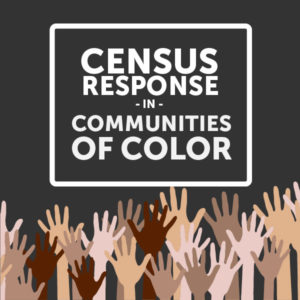
A decline in accuracy of equity-related measures in the 2020 American Community Survey
As a leading source of socioeconomic data, the U.S. Census Bureau’s American Community Survey (ACS) is used by community leaders, state and federal agency staff, business owners, philanthropists, and others who are planning and managing resources for future generations. For example, each year hundreds of billions of dollars in federal funds are sent to states to support medical, transportation, education, and dozens of other programs. ACS data figure prominently in how, where, and in what amounts those funds are distributed.
Some degree of inaccuracy is inevitable in surveyed data, but given what is at stake for so many communities, any decrease in accuracy of ACS is concerning.
New methods and pandemic disruption pose challenges to ACS accuracy in 2020
In 2020, the COVID-19 pandemic disrupted ways of reaching people, and new methods for protecting personal information were introduced by the Census Bureau. People who rely on ACS data have been concerned that the data gathered in 2020 may be less accurate and ultimately unreliable for decision-making.
To examine whether and to what degree accuracy changed from 2019 to 2020, we analyzed a suite of equity-related socioeconomic characteristics, including poverty, language barriers, and rental housing. The Census Bureau reports estimated margins of error for every data value. We used a statistical formula, called a coefficient of variation, to compare accuracy of 10 ACS equity-related measures.
ACS accuracy decreased in some equity-related measures
Our analysis found a decrease in accuracy for some measures. Among our key findings:
- The share of counties with inaccurate data increased slightly in 2020. Across the suite of equity-related measures we analyzed, the median increase in percent of counties with inaccurate data from 2019 to 2020 was 2.5%.
- In 2020, ACS data quality was worse in rural counties. Across the suite of equity-related measures we analyzed, the median percent of rural counties with inaccurate data in 2020 was 34%. By comparison, the median percent of urban counties with inaccurate data was 13%.
- Declines in 2020 data accuracy impacted all U.S. regions. More than 20% of counties in every U.S. region saw at least one previously accurate equity-related measure become inaccurate in 2020.
To achieve equity goals, more attention and resources are needed to improve data accuracy for rural communities and for specific equity-related measures. Agencies using ACS to allocate resources should allow flexibility and supplemental data to ensure help reaches communities most in need. This analysis provides a useful framework for monitoring ACS accuracy over time.






